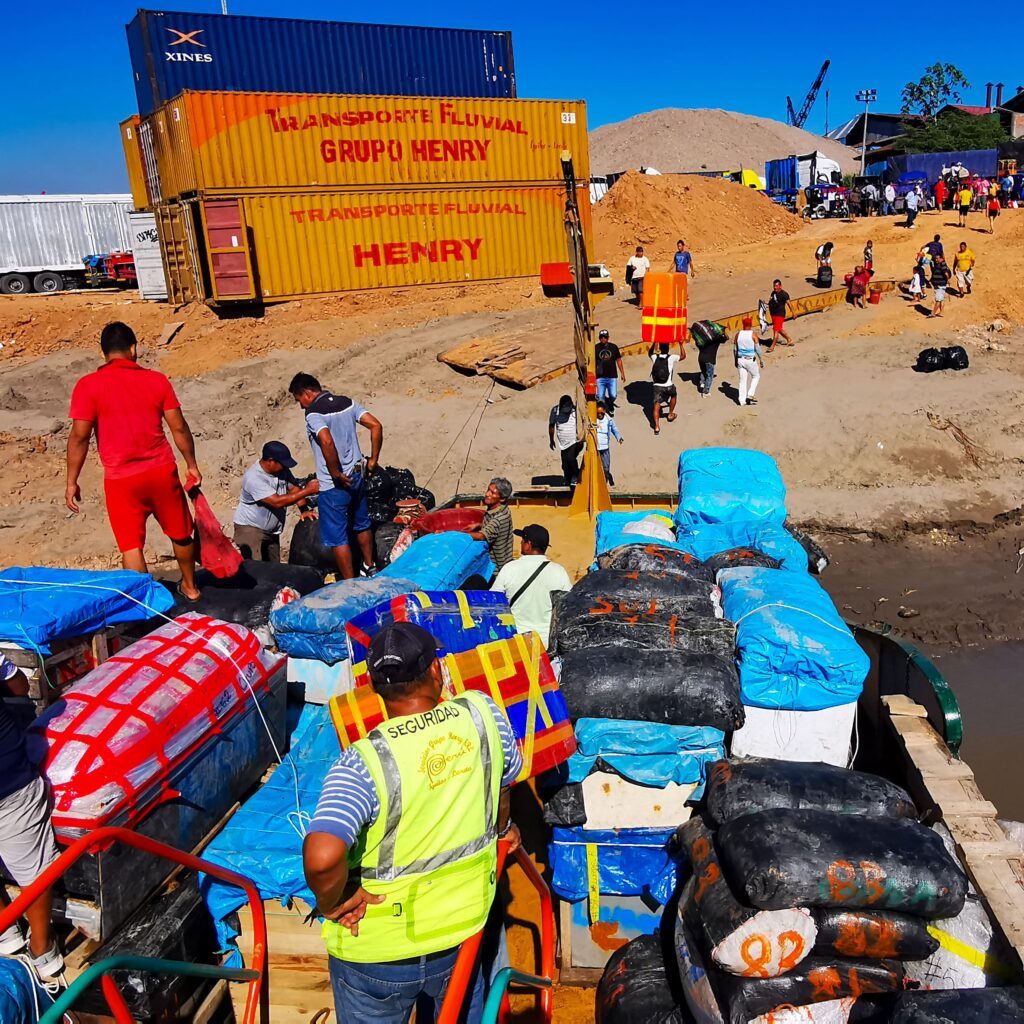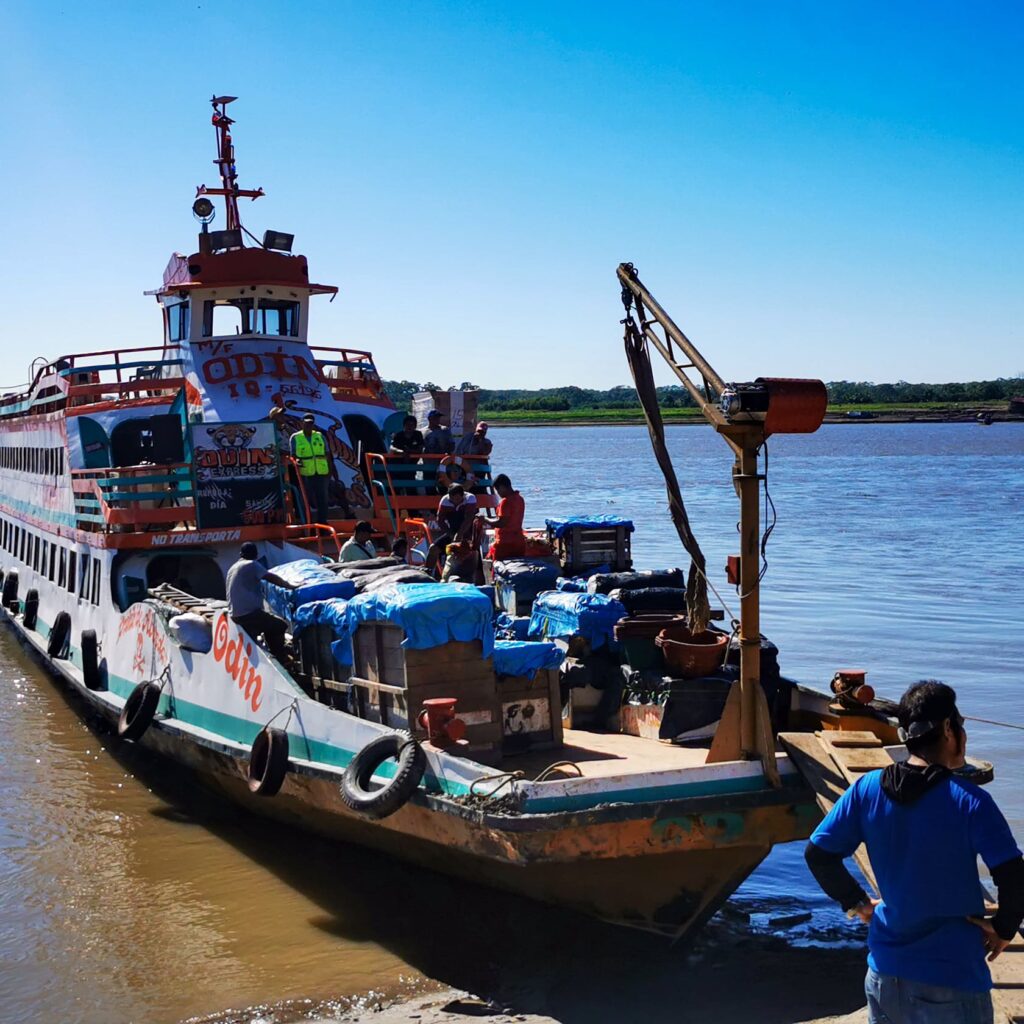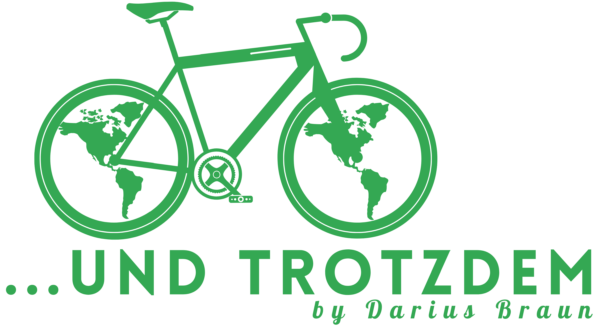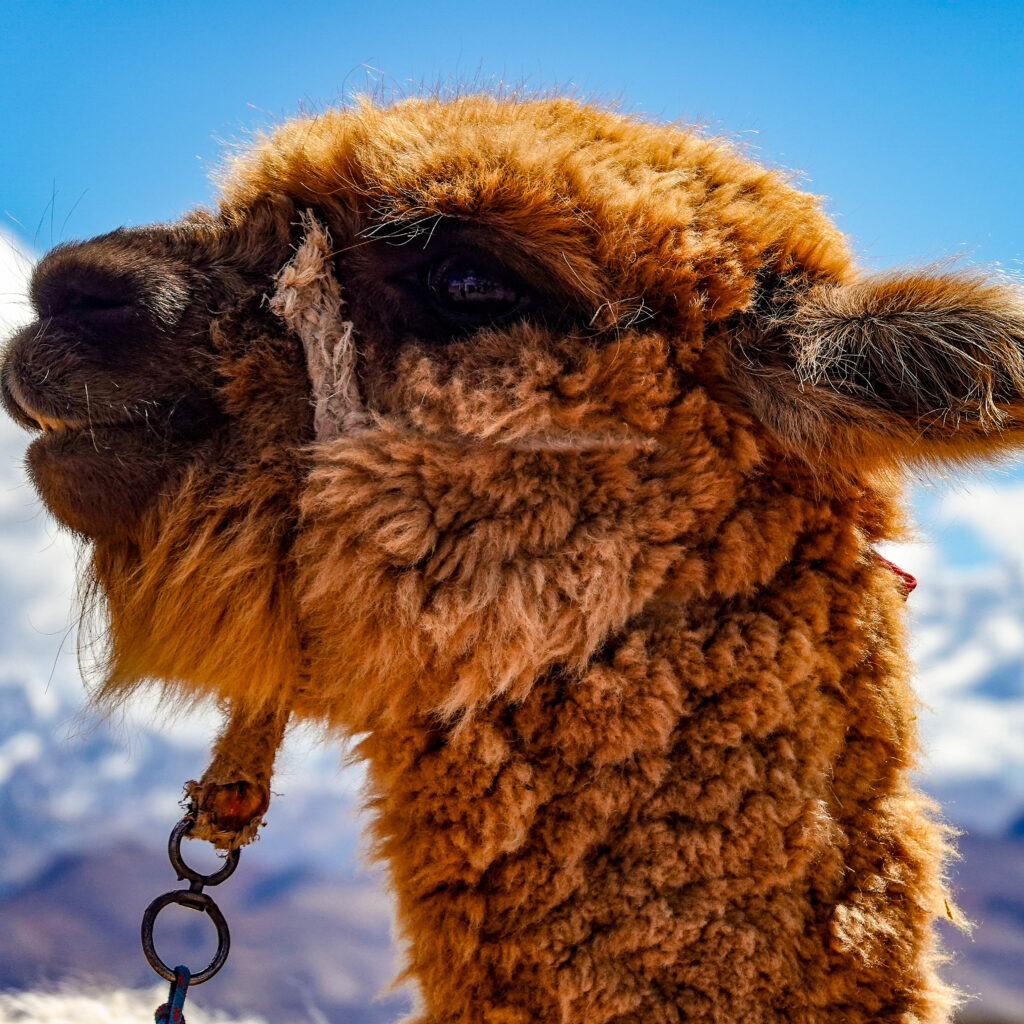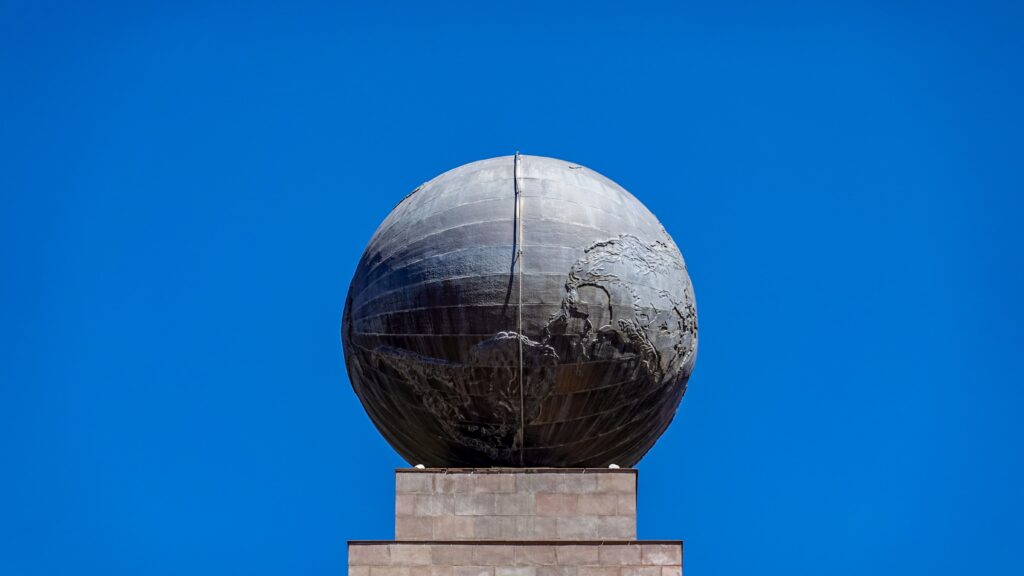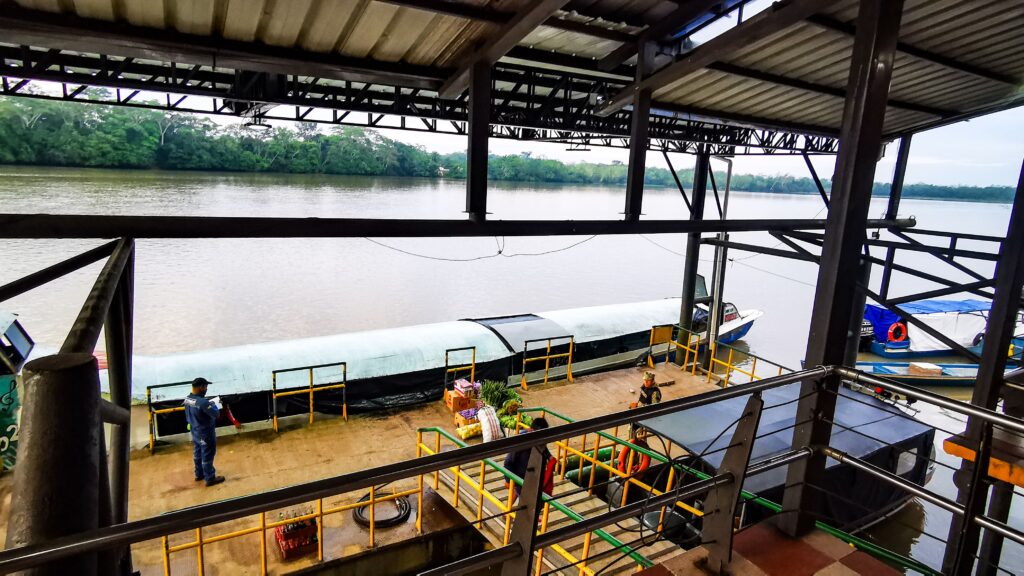
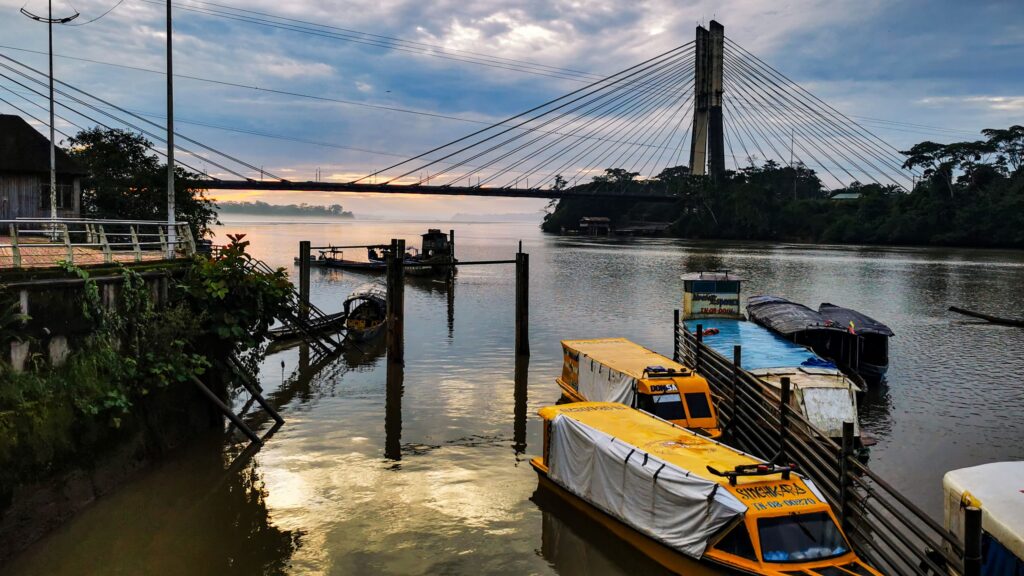
From “El Coca” we went over the “Rio Napo”, one of the countless tributaries of the Amazon, about 200 km to “Nuevo Rocafuerte”, a small jungle settlement at the border to Peru. This boat trip took 12 hours. Since it was the dry season, the river had only a shallow water depth. The “Rio Napo” had numerous shallows and therefore the boat zigzagged past rocks and sandbanks. Several times the boat grounded and had to interrupt the trip. Sometimes there was a strong jerk when the boat slowed down from full speed. I didn’t have a very good feeling, as the braking was accompanied by a rather loud creaking and groaning. However, the captain was deeply relaxed and it seemed like this was not a problem for the boat. When we hit a log that was floating in the water, which could not always be avoided, it cracked quite a bit and then the captain got nervous as well. Despite all these unplanned interruptions, the boat remained unharmed and fortunately the life jackets found no use. The “Rio Napo” already has a width of 800 meters at “El Coca”. A few kilometers behind it, three more tributaries meet the stream, which then grows to over 1 km in width. Attention! This is only ONE of the smaller tributaries of the Amazon, which is considered the most water-rich river on earth. I was really excited to see the Amazon.
As we moved further down the river, there were fewer and fewer sandbanks and shallows, and we made faster and faster progress.
I was fascinated looking out at the wide river and the shore with the seemingly endless rainforest. Every now and then a cargo ship passed by. Often they were pontoons loaded with tankers coming from the oil refineries around “El Coca”. In the second row, hidden behind trees, there are huge cleared areas under which the “black gold” is extracted. Probably they want to hide it from the eyes of critical environmentalists. But if you look more closely, you can see the flames of the drilling rigs through the trees. We left the refineries behind us and continued downstream. Occasional settlements could be made out on the banks. After lunch at one of these settlements, we continued for about 4 hours to our destination at the border with Peru.
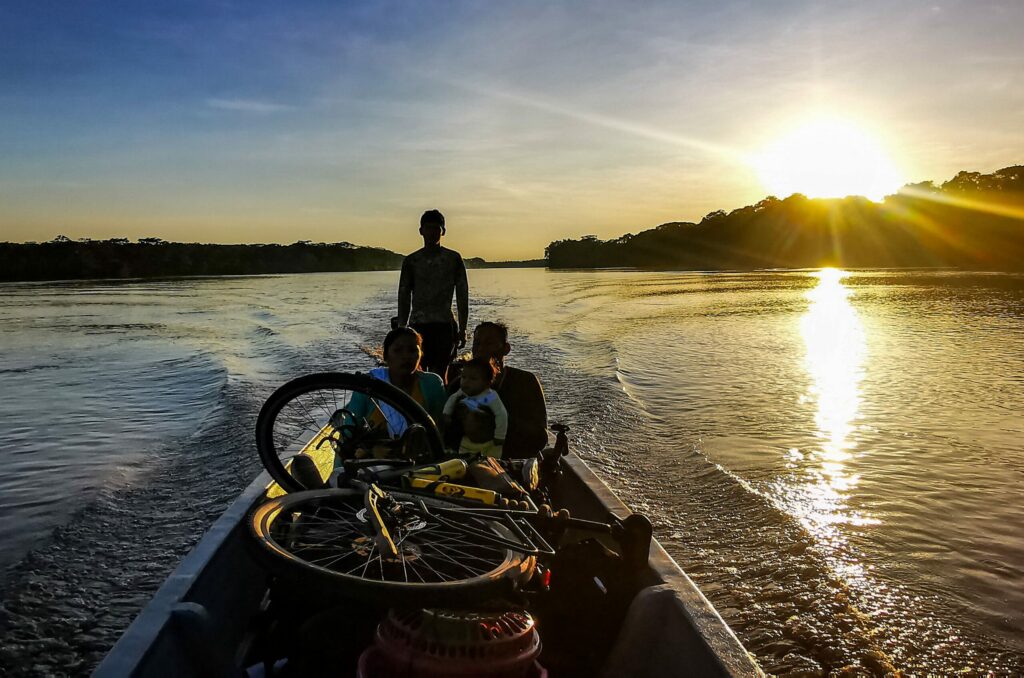
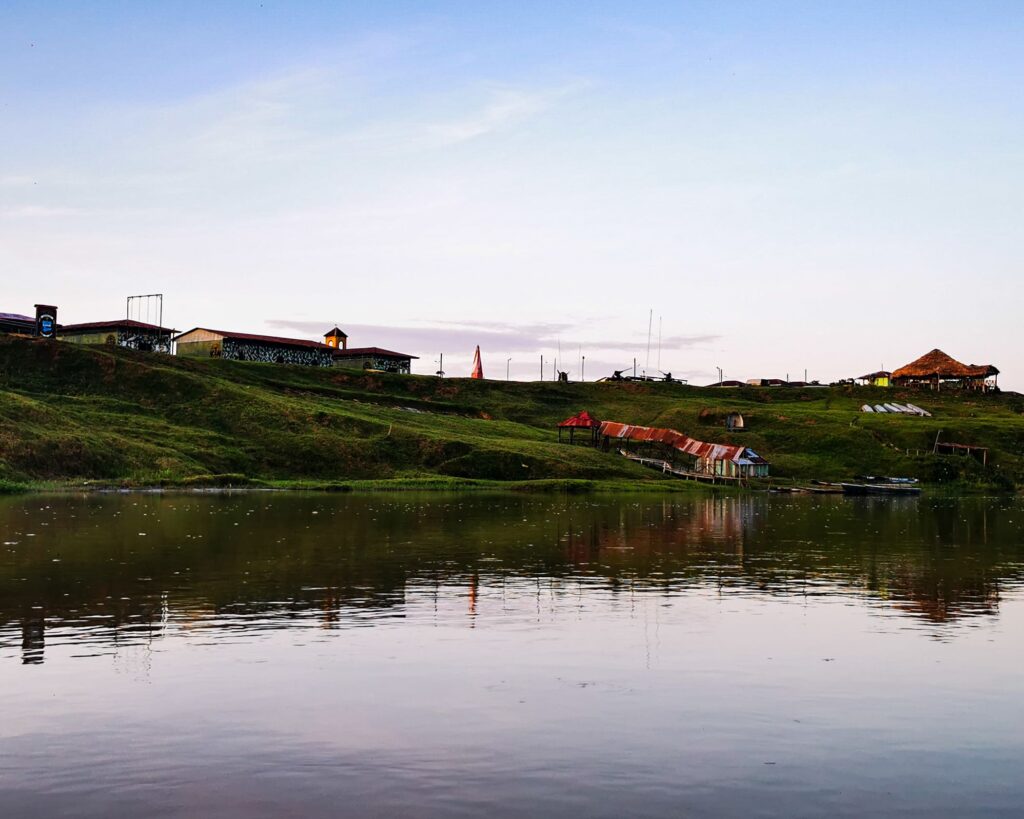
In “Nuevo Rocafuerte” I had to leave the boat with my bicycle and have my passport stamped at the Ecuadorian emigration office, a small jungle hut. Now it went, in a rather narrow boat, “Nussschale probably meets it better”, about another hour to “Pantoja”, the first settlement on the Peruvian side. The ride was like a picture book. Slowly we passed jungle giants. Countless birds made an eerie noise and huge flocks of birds swarmed. Just a few hundred meters away, macaw parrots flew majestically in small formations over the treetops. Slowly the sun was setting, turning the river and trees a deep orange-yellow. This was an almost unreal sight and a fantastic, peaceful atmosphere.
In “Pantoja”, a relatively simple settlement, I made my way to the migration office. To my surprise, I was received in an extremely friendly manner. One of the few border officials so far, which were cordial and really nice to me. Since only a few people come through here and especially few foreign travelers who then still travel with a bicycle through the world, he was very interested and open for a chat. I was the last person in the office that day. With my arrival, the border official could finish his work and led me to the port to introduce me to the captain for the boat to “Iquitos”, which should leave the next morning at 4 o’clock.
I was extremely lucky that everything went so smoothly. The official told me that most travelers spend one night in “Nuevo Rocafuerte” and only come to “Pantoja” the following day. There you have to be patient most of the time, because from here the boat traffic to “Iquitos” is sporadic. There is a cheap boat that takes 3-4 days for the 600 km crossing. However, this goes only twice a month. I had the great luck to get the faster boat, which makes the trip in 1.5 days. It cost almost three times as much, but was still cheaper than waiting 14 days in “Pantoja” for the other boat. Besides, I wouldn’t know what else to do after two days in this place. I spent the night in my tent under the pavilion at the village square to be protected from the rain. This would not really have been necessary, because the night was starry and the full moon illuminated everything beautifully. Also the question about the mosquitoes, which probably burns some on the tongue, can be answered quickly.
In the dry season, which is there between June and November, there are only a few days with precipitation and therefore also fortunately few mosquitoes. It was also very pleasant on the river. There was a constant fresh breeze and therefore hardly any insects. As soon as I went ashore, however, it became much more humid and hot and many mosquitoes buzzed around me. With good anti-mosquito spray, however, it was bearable. All in all, I was in the right place at the right time.

After setting up my tent, I sat down on a nearby bench to prepare my dinner. The site had a great view of the river and the rising full moon. Jamie, the border guard, was also there looking at the evening sky. He is from “Iquitos” and works alternately at different border stations in the Amazon. Now he was in “Pantoja” for more than one month. He told me that on the one hand it was wonderful and relaxed to work like this, but on the other hand it was very boring and monotonous.
He said that at some point he would also like to travel, like me, to be able to pursue his passion more. He likes to help people, to talk to them about their feelings and concerns, and he trained as a mediator during the corona pandemic. He would like to deepen this and work more in the psychological direction. More and more people would welcome this and he has already been able to help many people. But it is not easy, he says, because there is hardly anything like that here and people are not sensitized to it. The problems are rather swept under the table or drowned in alcohol. Although he is already over 50 years old, he hopes that he can contribute to psychology getting more attention in the future and that he can fully pursue his passion. After our great talk, I headed to my tent to get some more sleep before heading out bright and early.
Similar to the “San Blas Islands” in Panama, there is also a big alcohol problem among the population. Many men get together to get drunk. A group of older men bawled and drank the whole night through, so that I got as good as no eye closed.
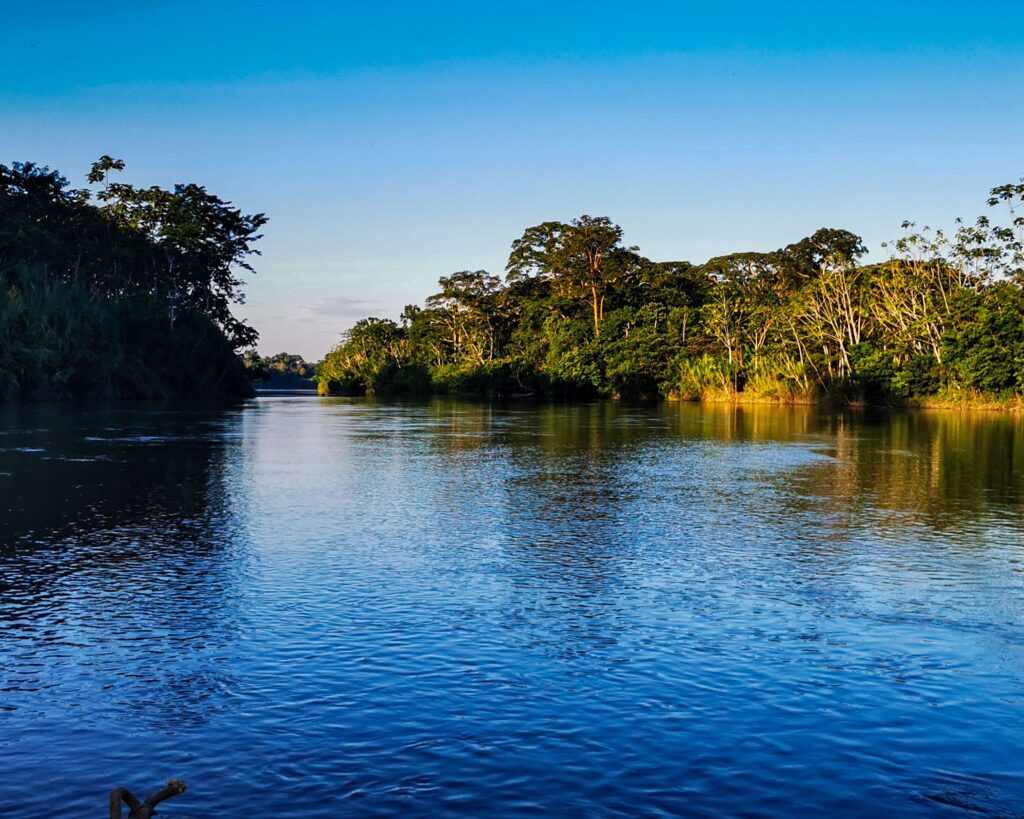
At 4 o’clock we started in the direction of “Iquitos”. We drove for almost 2 days over 600 km downstream to the mouth of the “Rio Napos” in the Amazon and to the Peruvian city “Iquitos”, in the heart of the Amazon rainforest. We took our first break after several hours at a small jungle settlement. Absolutely idyllic in a small river mouth was here a rustic, rudimentarily equipped restaurant. For dinner we had a strange looking meat of a local jungle animal, rice and plantains. When I asked what animal it was, I was told in indigenous language an animal completely unknown to me. I am not sure, but believe it was something like an armadillo or similar. In terms of taste, it was somewhere between pork and beef and had a lot of fat and thick rind. This left all sorts for the cat, which was cavorting under my table.
After the meal break we continued down the river. Again and again people got on or off. Mostly they were brought or picked up by a dugout canoe of the locals to the boat. What amazed me was how people here manage to have such white shoes and clean clothes under such conditions.
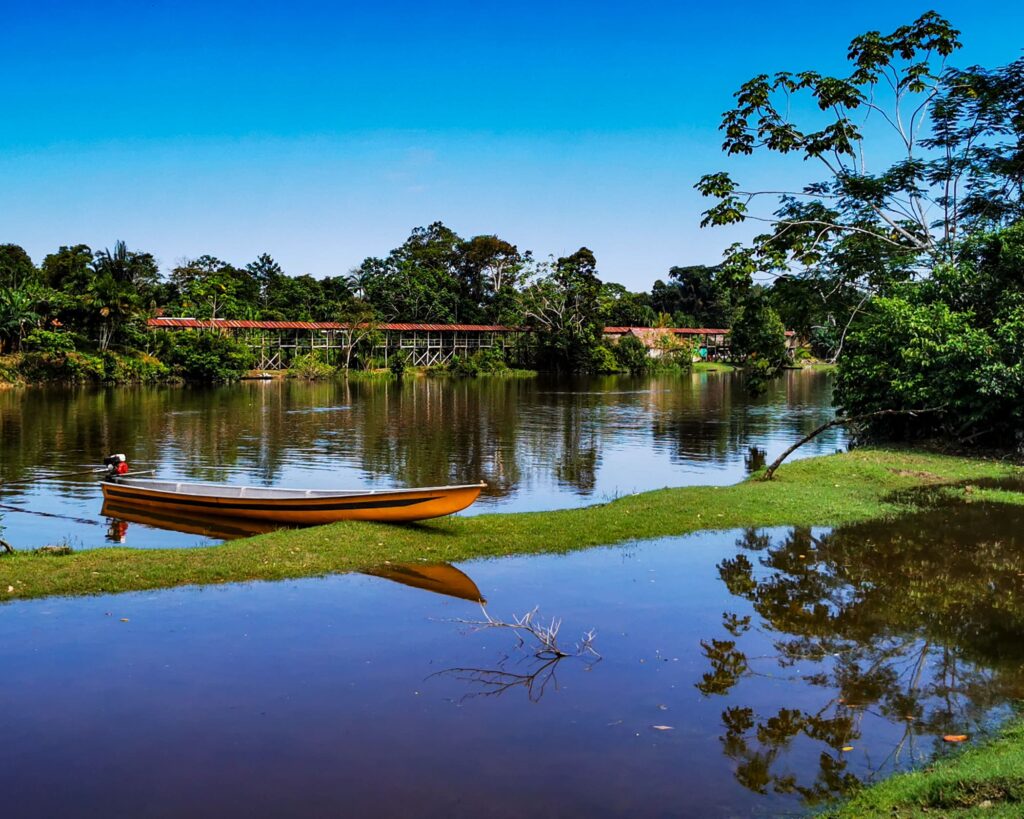
We spent the night in “Santa Clothilde” and left at three o’clock in the morning the next day to arrive in “Iquitos” at noon. In “Mazan”, close to the Amazon River, we had to leave the boat and change into a “Tuck Tuck” for a 15 minute ride. By land, it is only a few kilometers to the Amazon here, whereas the river trip would have taken several hours again. I was annoyed, because no one had told me about it and I was sure that this extra tour would cost me something extra again.
In absolute stress, the bags and my bike had to be taken off the boat, because the captain wanted to leave immediately. Everyone was short-tempered and I felt like I was on a military exercise. Feels twenty people wanted to help me bring my things to the “Tuck Tuck” to then get a completely excessive tip from me. Since I was warned before not to let my things out of sight, because thefts were there on the agenda, I packed my bike focused like a watchdog in wind speed and maneuvered it from the port platform. In this stress and without questioning where exactly it should go, I loaded everything on the “Tuck Tuck” and sat down. A maximum 10 years old boy drove me like a madman along narrow paths over the land ridge. I only hoped that the boy knew what he was doing and would bring me safely to the right place. Good 20 minutes I sat tense and absolutely uncomfortable turned backwards to hold my bike on the vehicle. We drove with frightening speed by innumerable potholes, so that I would have slipped despite tension some times partially the bicycle. When we came to a halt at some point, I was totally exhausted, god-glad to finally relax and no longer have to hold my bike.
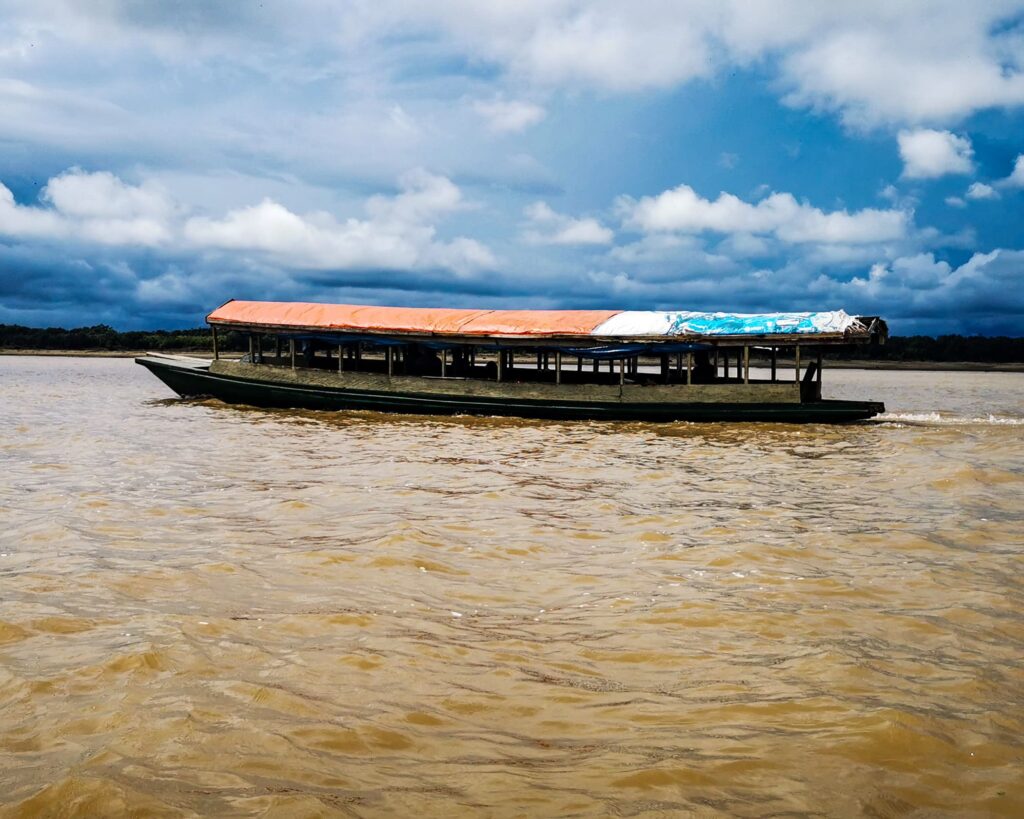
Along the Amazon we went for the last half hour with a speedboat to “Iquitos”. At this point, the Amazon is still relatively narrow with a width of over 2-3 km. For me, however, it was tremendous and impressive to see that. Unfortunately, quite different from my idyllic ideas, the water is brown and murky from all the sand and therefore does not make a very clean impression. To the point, the Amazon is “a gigantic brown broth”.
Arrived in “Iquitos” it was even more hectic than in “Mazan”. Countless people bustled around the harbor. They were pushing, shoving, shouting all over the place. In this hustle and bustle, I had to get my bike off the boat, load it again with my bags, and watch out that nothing was stolen. To get to the road, it was a circuitous walk over several narrow wooden planks to the harbor building. Racked and overtired from the boat ride, I had to balance my bike with luggage across these planks in this scramble without falling into the water. My left-sided coordination difficulties, coupled with my poor sense of balance made this an absolute tightrope act. As if that wasn’t enough, we then went up a narrow chicken ladder 5 meters. With the help of a few people, however, even that worked. Afterwards it is quite clear to me that it was so awkward because of the dry season. From dry to rainy season, the water level here fluctuates by up to 8 meters.
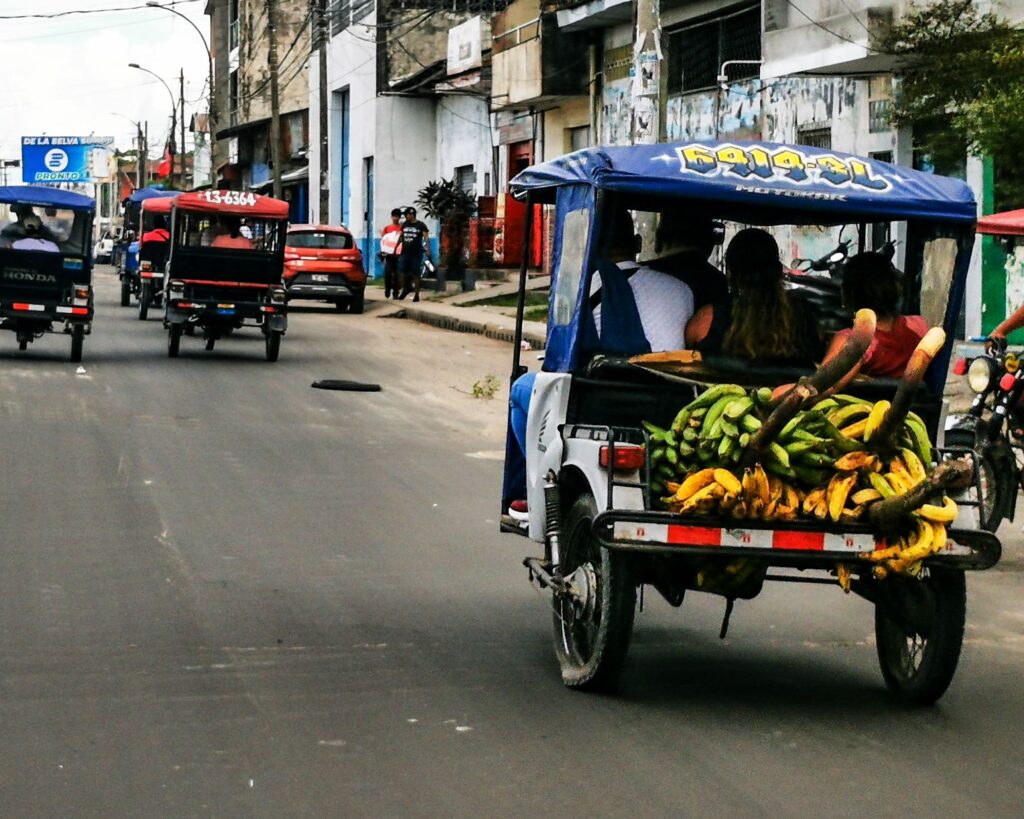
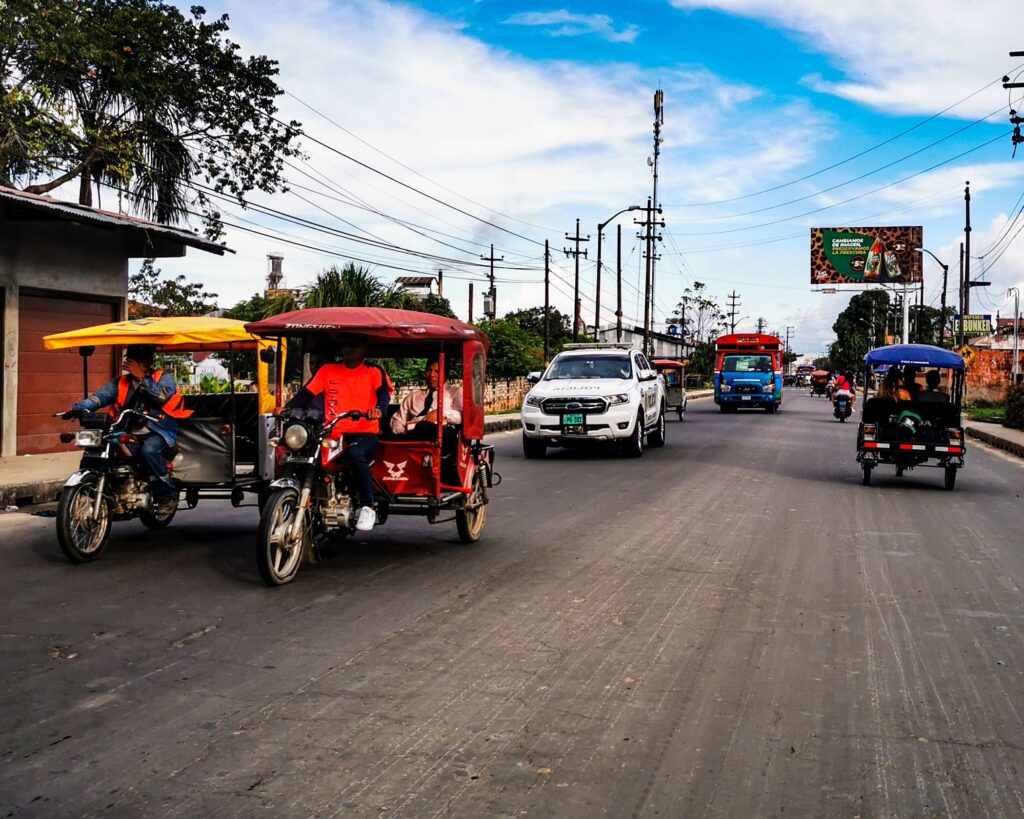
On the street, outside the harbor, there was complete chaos. “Tuck Tucks”, motor scooters and occasional buses crowded along the main road. I had only seen something like this before in movies from India. “Iquitos” is by far the largest city in the Peruvian rainforest and is located like an island only reachable by ship or plane over 500 km as the crow flies away from the next traffic connection. The city is located 150 km downstream of the confluence of the two main source rivers of the Amazon. The much longer but less water-bearing “Rio Ucayali” whose tributaries reach as far as “Machu Pitchu”, and the shorter but much more water-bearing “Rio Marañón”, which rises in northern Peru near the border of Ecuador.
Due to the commercial discovery of rubber for rubber production, “Iquitos” became an economic metropolis next to the Brazilian “Manaus” at the end of the 19th century. The rubber tree was originally found only in the Amazon rainforest, but was smuggled into Southeast Asia by the British during the First World War. In Malaysia in particular, they pushed rubber cultivation, as it was much more profitable to produce there and could be harvested under simpler conditions. Within a very short time, “Iquitos” was economically bankrupt for almost half a century. It was not until the discovery of oil that the city regained economic importance from 1960 onwards and grew strongly.
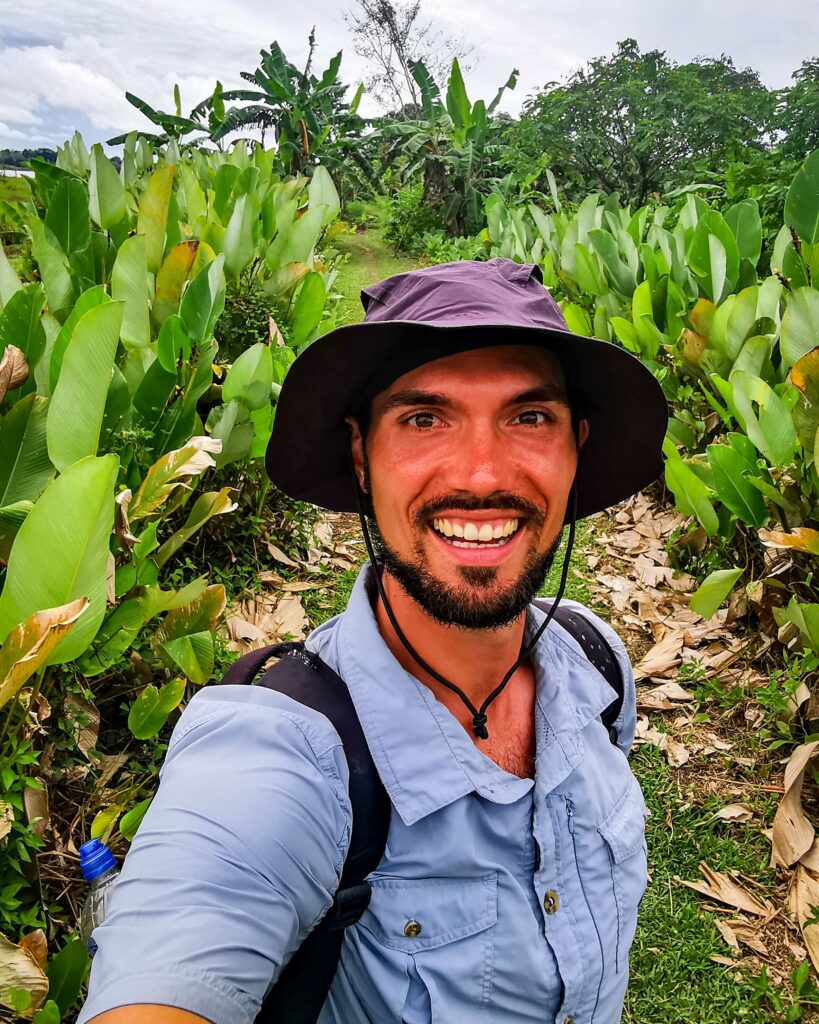
One reason I had made the detour to “Iquitos” was to visit the Amazon rainforest. From here, I participated in a three-day jungle tour. I was pleased that we were a small group of only 5 people. Even better was that I was the only person who had booked the full adventure with an overnight stay deep in the jungle. So I got a private tour guide to accompany me along with his 13-year-old son. From a lodge in a reserve near the Amazon, about 2 hours from “Iquitos”, we hiked into the rainforest to our overnight spot. Here a small shelter with insect protection was built. In order not to be surprised by the rain, I put up my inner tent inside the hut. Since malaria is prevalent here, I preferred the double mosquito protection. From the night camp, we set out for a jungle hike that lasted several hours. First, we rode a rowboat across a swampy area and then fought our way further into the undergrowth. The guide Julio, with his height of 1.55 meters, had distinct advantages over me. He could mostly walk under tree trunks, lianas or bushes without any problems. Although he cleared the way with his machete, I, with my almost 2 meters, often had to wriggle my way through.
Since in the dry season there is usually only a short rain shower at night, it was relatively dry and extremely hot. At least we were somewhat protected from the sun by the trees. Nevertheless, the heat at midday, coupled with the high humidity, was extreme. One advantage was that we were spared from the mosquitoes, which can become the purest plague in the rainy season. As soon as the sun went down the temperatures dropped to a very pleasant 20°- 25°C. During the night it even got a little fresh and the mosquitoes came out. Julio had taken some jungle cigarettes with him. It is a custom among the locals to smoke cigarettes made of pure tobacco in the jungle to drive away evil spirits and to unite one’s spirit with nature. In my opinion, the smoke just helps damn well against the countless mosquitoes that besieged you despite anti-mosquito spray.
When we had to cross the swamp again in the darkness, some rather large bats flew suspiciously close above us. Probably they just wanted to show us that it was their territory and we had no business there. Julio, who seemed to be a bit scared, said that there were many evil spirits in this place, lit one cigarette after another and urged us to leave as soon as possible. Besides the bats, we saw some rather large spiders, toads, birds and a huge white bamboo rat. Actually quite little compared to what we could hear. But those that are easily spotted in the jungle quickly end up on the menu of the next highest on the food chain. Still, I would have been happy to see some snakes or colorful poisonous frogs. The next day Julio told me that this area has been hunted by locals in the past and therefore many animals have been avoiding this area for a long time.
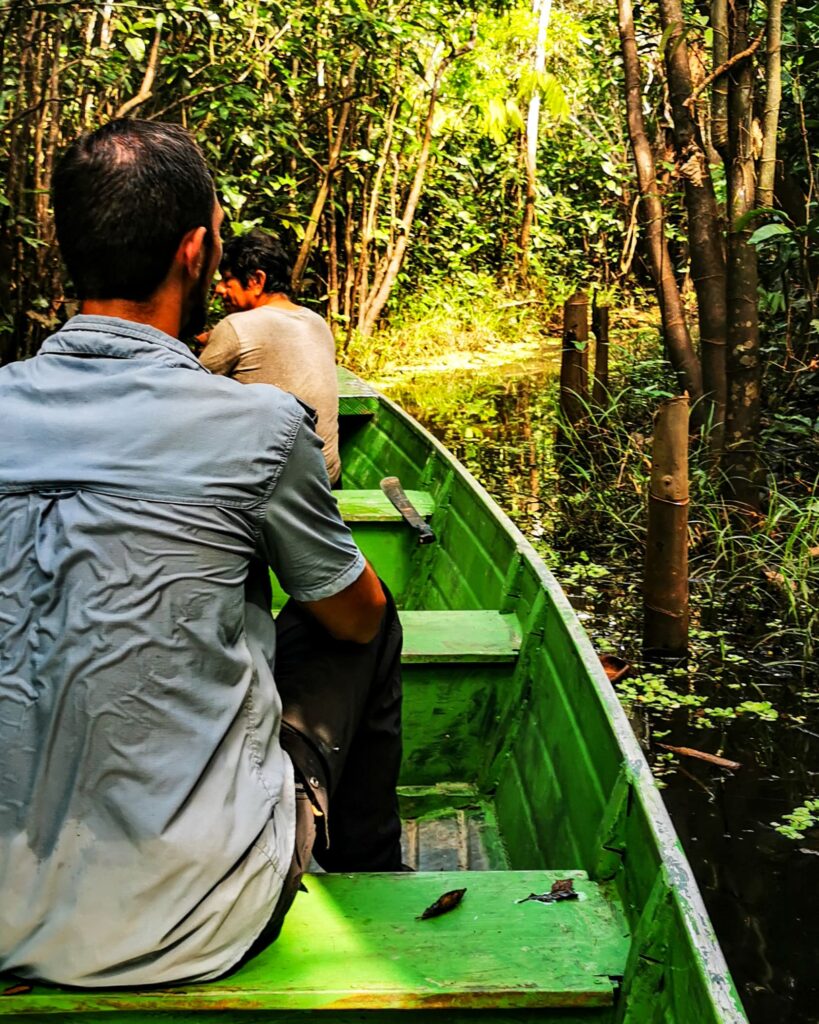
After our breakfast, we left the camp and headed out in hopes of spotting several animals in another area. The change of plans paid off and we spotted different species of monkeys and birds. Quite difficult to spot, for example, are the pygmy marmosets with their lion-like manes. One of the smallest monkey species in the world. Near a small settlement we saw a water rat, which is a close relative of the capybara, and also talking parrots, which squawked loudly “Buenas” or “Hola”. They probably picked this up from nearby humans and adapted it. Despite the warning before the night hike that, the new area would be very dangerous and many snakes would live there, unfortunately, I did not see any snakes or other dangerous animals this time.
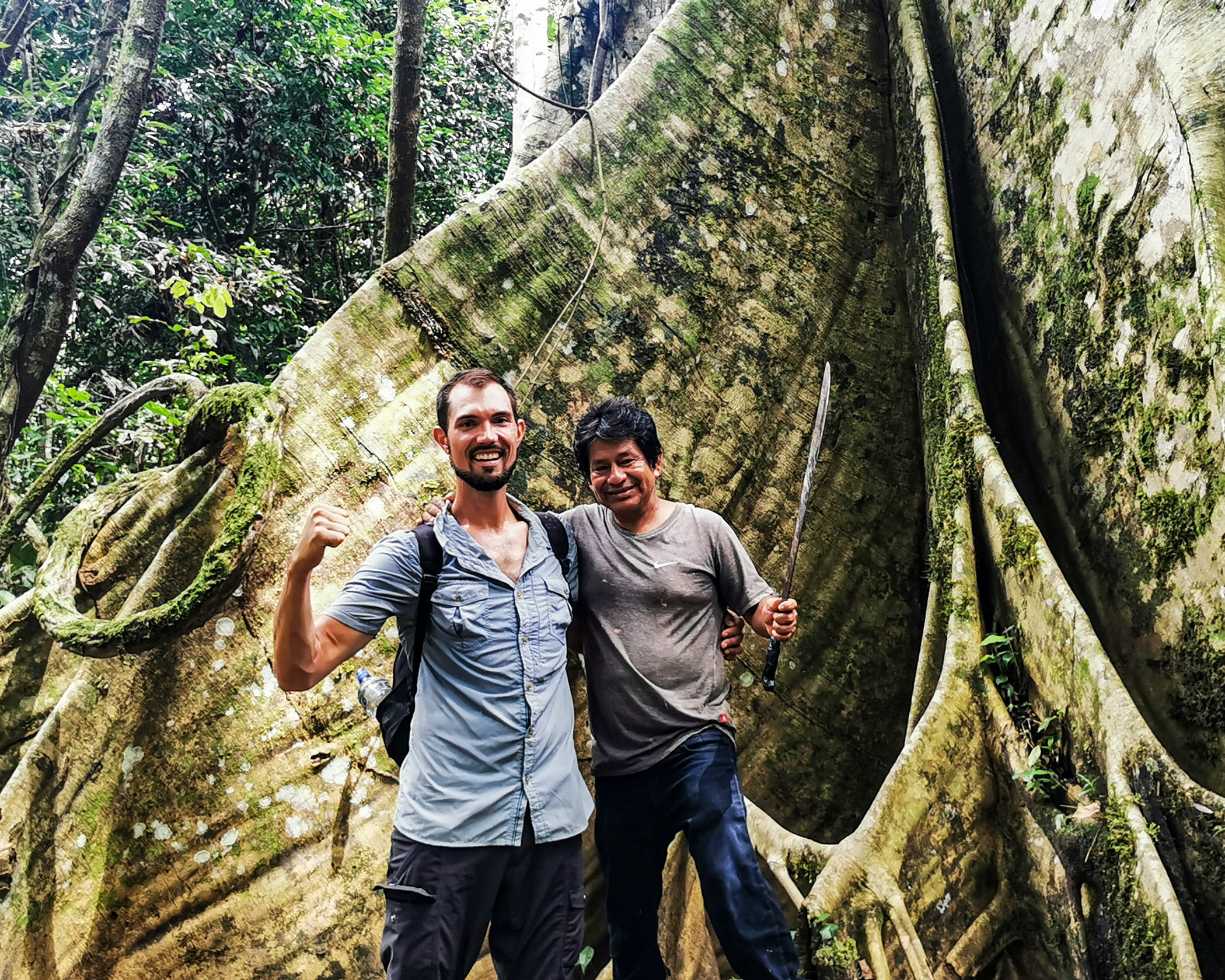
The last day was my absolute highlight. This time we did not go deep into the rainforest, but to a monkey rescue station. Here the monkeys moved completely free. Since they are fed and treated well, they voluntarily stay at this place or keep coming back. As soon as we walked onto the grounds, they came down from the trees to greet us. The leader, a rather large male, jumped right on my shoulder and made himself comfortable on top of me. Other monkeys just wanted to cuddle or play wildly. There was also a puppy dog fighting with a monkey on the grounds. When I joined in, the leader of the monkeys also joined in the scuffle. More and more wildly, the male played himself into a frenzy. As if he did not know his limits, he became more and more violent, so that the puppy fled. The male kept trying to bite my knee and became more aggressive every time I stopped him. Finally, one of the employees came and chased him away with a stick. After a few minutes it calmed down and was trusting again.
On the way to a canoe tour, where we watched a local fishing for piranha, we visited another animal rescue station. Besides all kinds of native animals, the sloths with their friendly faces were especially fascinating to me. When they move, it is very slowly but they can eat at quite a speed.
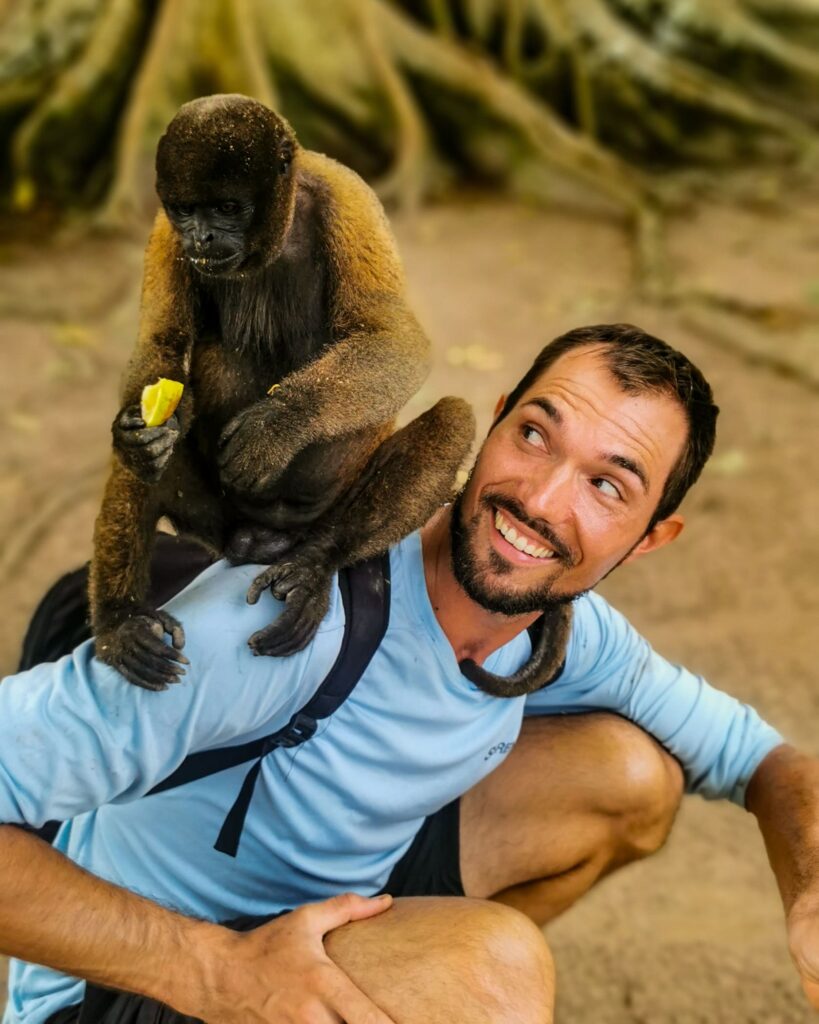
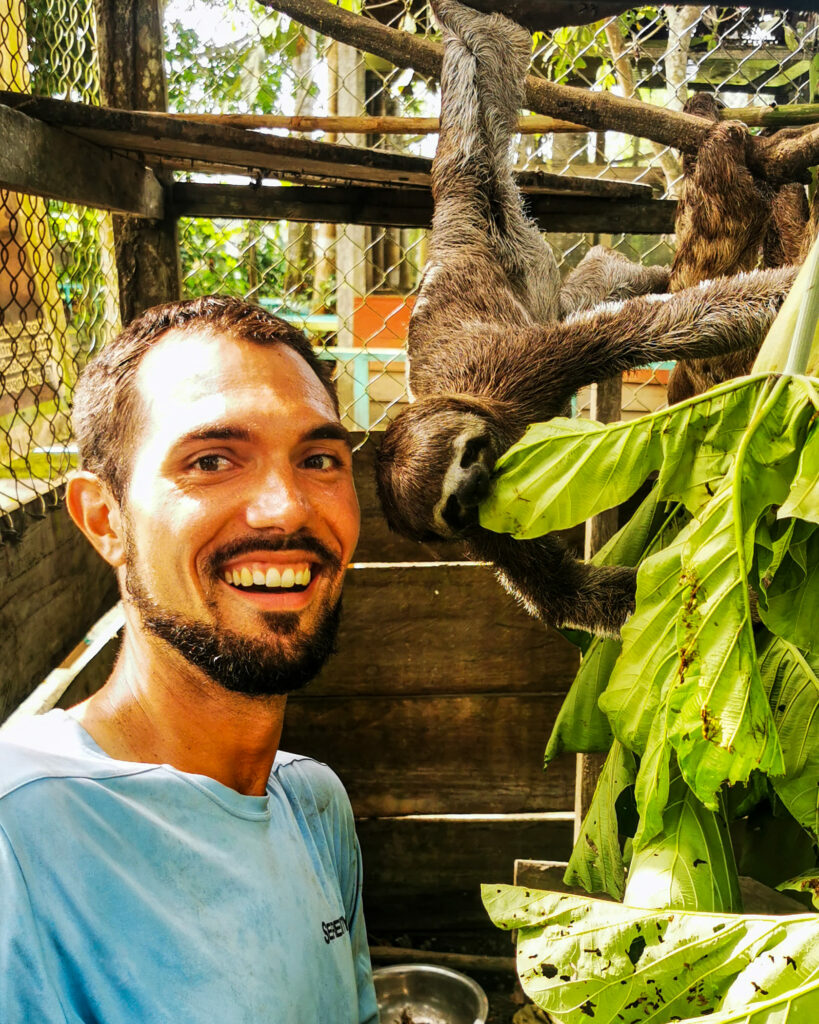
After two nights and three days, the jungle adventure was unfortunately already over. But I would have desire and ideas for a future tour.
On my last day in “Iquitos” I visited the “Belen-Mercado”. In the poorer and very run down district of Belen there is a huge market. Here you can find all kinds of exotic specialties from the jungle to buy, besides the classic market products. Alligator skulls, -meat, exotic fish, turtles, jungle plants etc.. Unpleasant smells and sometimes quite disgusting conditions characterize the image of the market.
The market visit, which with its various influences can quickly become an absolute culture shock for the unprepared tourist, was on the one hand totally fascinating, but on the other hand also quite frightening. The dirt and especially the garbage were stressful for me. In these conditions, people here live in dilapidated and scrapped dwellings. Mountains of garbage are simply thrown into the river. This was very sad for me to see. Although I had seen and experienced quite a bit by now, I was really glad after these extreme experiences to be able to sit on my bike again and enjoy the peace and quiet.
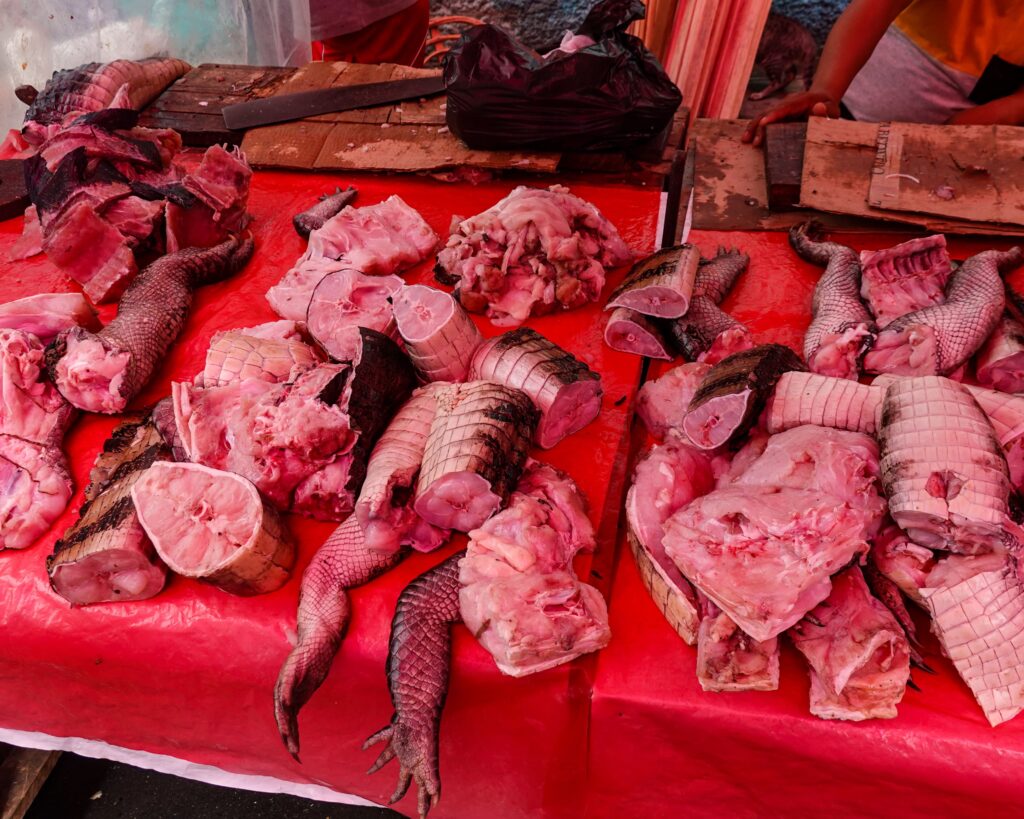
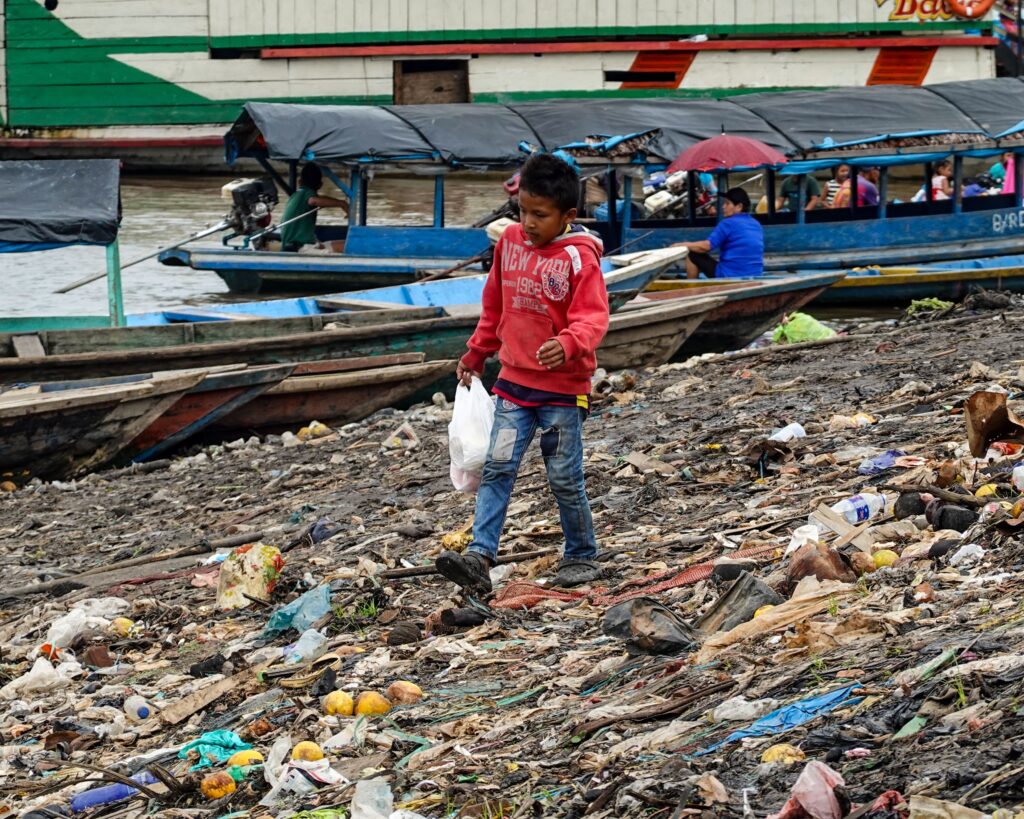
The last part of my Amazon trip was two and a half days and 1200 km upstream via the “Rio Ucayali” to “Pucallpa”. From “Iquitos” large ferries go regularly several times a week to “Pucallpa”. In the afternoon I arrived at the port and could easily put my bike with my bags on the passenger ferry. Fortunately, the ship was not even half full, so I had several benches for myself. Shortly after boarding, I met Santiago, a 25-year-old traveler from Ecuador, who was also moving on after more than a month and a half in “Iquitos.” Similar to me, he found the city on the one hand fascinating but on the other hand hectic and with a not so positive energy.
When the last people had entered the ship, a music system was set up and turned up really loud. With Peruvian party music and some hits of the 80s we left “Iquitos”. The cruise was relatively luxurious. We got three meals and a bar with drinks was on board. There were enough toilets and washing facilities, but the smell and the brown water of the Amazon did not make such a hygienic impression. But the most extreme thing was definitely the engine of the ship. A huge ship’s diesel, completely open to every guest, roared at full volume. The noise was so strong that a conversation on the upper deck was hardly possible and also the loud music from the front deck, no longer perceivable.
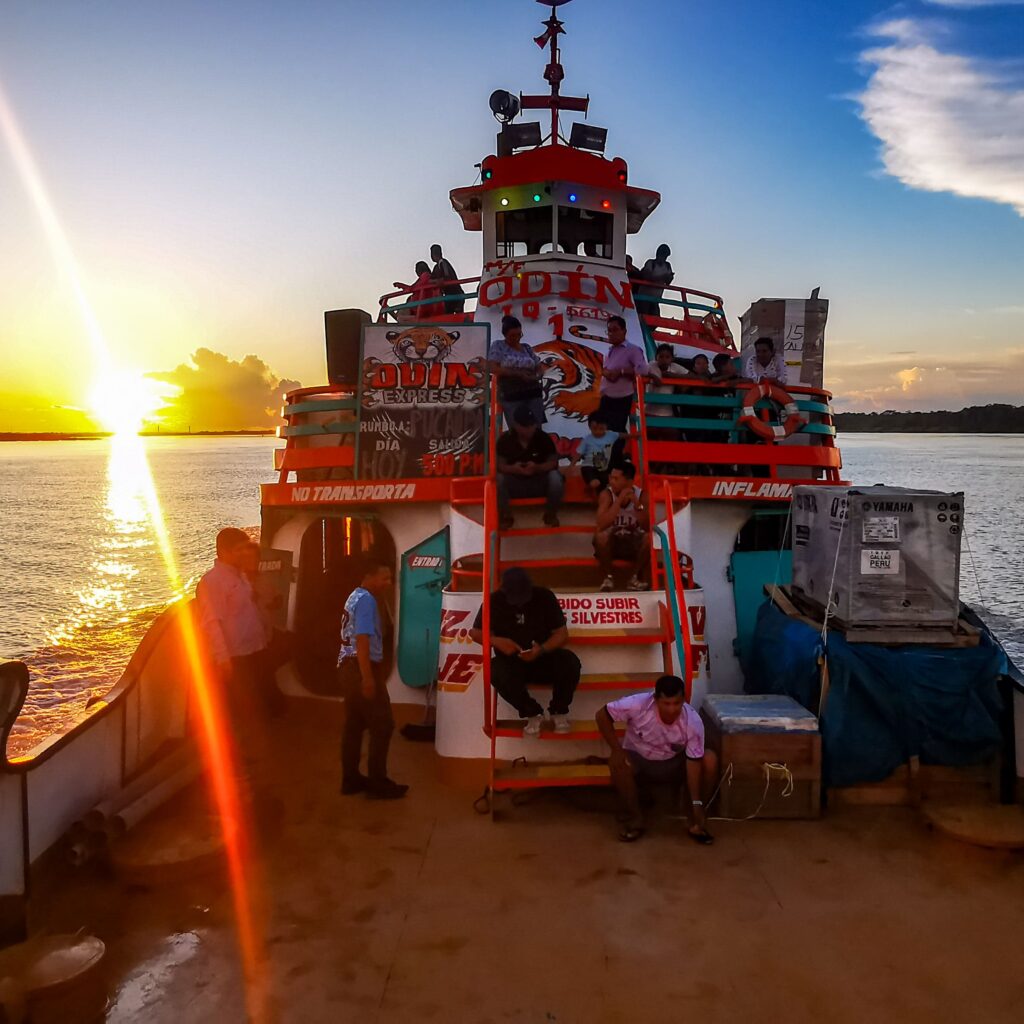
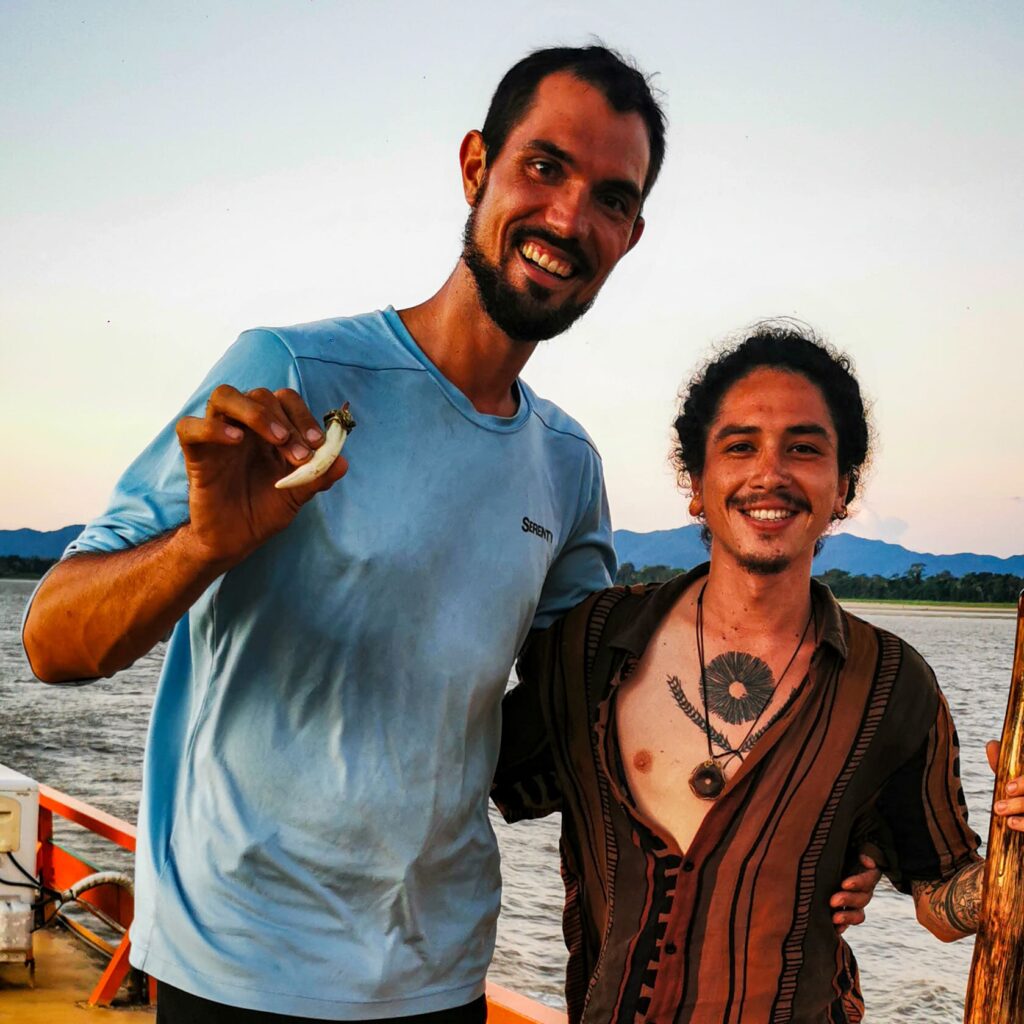
Some passengers had their dogs with them and didn’t really seem to care about their animals, which of course had to defecate at some point. Chickens, chicks and even a rooster that started crowing at 4 in the morning were other fellow passengers. The best place was definitely the roof of the ship. Unfortunately, the sun was blazing down so hard from 10 a.m. that it was unbearably hot, so you had to go to the sweltering passenger deck. In the mornings or evenings, however, it was nice to watch the sun rise or set with a fresh breeze. On the second day of our tour, we encountered a ferry at least three times our size that had run aground. For over an hour, the captain of our ship tried to free the other boat from the shoals. This was a highlight for all the passengers who watched this spectacle with interest.
Santiago, who financed his trip by playing street music or selling homemade jewelry, used the trip to make more of his necklaces and rings. I proudly showed him my alligator tooth that I had found in “Iquitos” and asked if he had an idea for a necklace. He made me an ornamental suspension for the tooth.
After two and a half days we arrived in “Pucallpa”, in the center of Peru.
From here I set off again on my further journey by bicycle.
